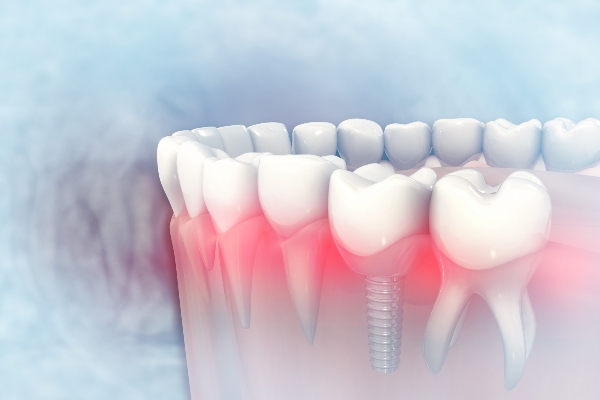 Replacing missing teeth with dental implants can result in a stable and strong bite. It restores the crown and the root. Knowing how this dental replacement system replaces a missing tooth can convince you to set an appointment with your dentist about it. Here are the details about how dental implants can make this happen.
Replacing missing teeth with dental implants can result in a stable and strong bite. It restores the crown and the root. Knowing how this dental replacement system replaces a missing tooth can convince you to set an appointment with your dentist about it. Here are the details about how dental implants can make this happen.
How dental implants help
Tooth loss removes the dental root from the jawbone. This means that the jawbone does not have a stimulant anymore. The body does not receive signals to send nutrients to the jawbone for tissue repair. This leads to jawbone loss. Dental implants prevent this from happening.
The dentist cuts through the gum tissue and drills holes into the patient’s jawbone. Applying the titanium rods into the implant holes will follow. Then, the dentist will close the gum tissue over the rods by stitching it. This can help with the implant site’s healing. Dental implants can replace the lost dental roots that stimulate the jawbone. The stimulation signals the body to send nutrients to the jawbone for tissue repair and prevent jawbone loss.
Tooth loss leaves gaps in the dental arch. These spaces trigger the neighboring teeth to shift. Dental shifting can lead to dental misalignment. This can cause decay and instability in the patient’s bite. It may even develop into jaw pain and headaches.
The restoration
Dental implants are popular sources of support for partial dentures and dental bridges. Each implant replicates a complete dental structure. That is why it looks, functions, and feels like a natural tooth. The titanium rod is the dental root. The dental crown stays on top of the rod by means of an abutment.
The support that dental implants need does not depend on the neighboring teeth. It depends on how the titanium rods merge with the gum tissue and jawbone. A dental implant can function on its own and stand alone. It will not move from its place once the titanium rods become one with the dental components.
The placement
It will take about three to five months for the dental implants to finish the fusion and recovery. This creates a strong base for these restorations. This process is osseointegration. Temporary dental crowns can protect the areas while the titanium rods fuse.
After the complete fusion, connecting the abutments will be next. The dentist will cut through the gum tissue to expose the top of the rods. Then, the abutments will attach to them. These titanium parts will connect the dental crowns to the rods. Stitching the gum tissue around the abutments will help these areas heal.
After about two weeks of healing, the dentist will attach the dental crowns to the abutments. The dentist will use strong dental cement in attaching the dental crowns. This will give the patient a stable and strong bite. Dental implants can last for decades with proper care and maintenance.
Understanding how dental crowns replace missing teeth can motivate you to care for them more
Dental implants are stable and strong dental replacements. They function and look better than temporary dentures. They can also last longer than dental bridges. Working with your dentist can maintain the healthy condition of your dental implants.
Request an appointment or call Upland Dental Group And Implant Center at 909-660-6080 for an appointment in our Upland office.
Related Posts
Achieving a bright, functional smile can be life-changing, and dental implants stand out as a dependable solution for replacing missing teeth. These implants anchor into the jawbone, restoring comfort and the aesthetics of natural teeth. However, proceeding with this procedure requires thoughtful preparation and clear communication with a dental professional. Below are five important topics…
Dental implants provide a durable and long-lasting solution for missing teeth, but like natural teeth, they can be damaged under certain circumstances. Trauma, excessive pressure, or complications with the surrounding structures may compromise the integrity of an implant. Understanding what to do in the event of damage can help prevent further issues and protect oral…
Dental implants are one of the most reliable and lasting solutions for replacing missing teeth. Unlike traditional dentures or bridges, implants integrate with the jawbone to provide a stable foundation for artificial teeth. While many patients benefit from implants, not everyone is an immediate candidate. Certain factors must be evaluated to determine eligibility, and for…


